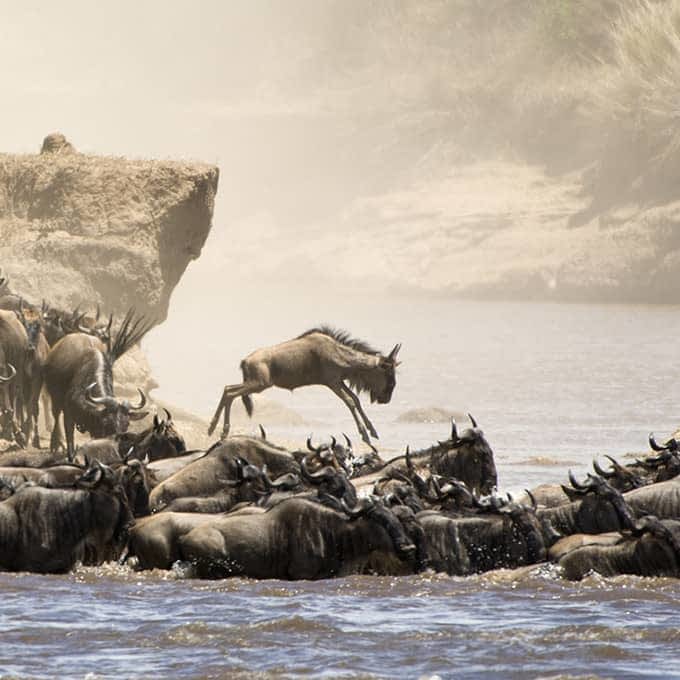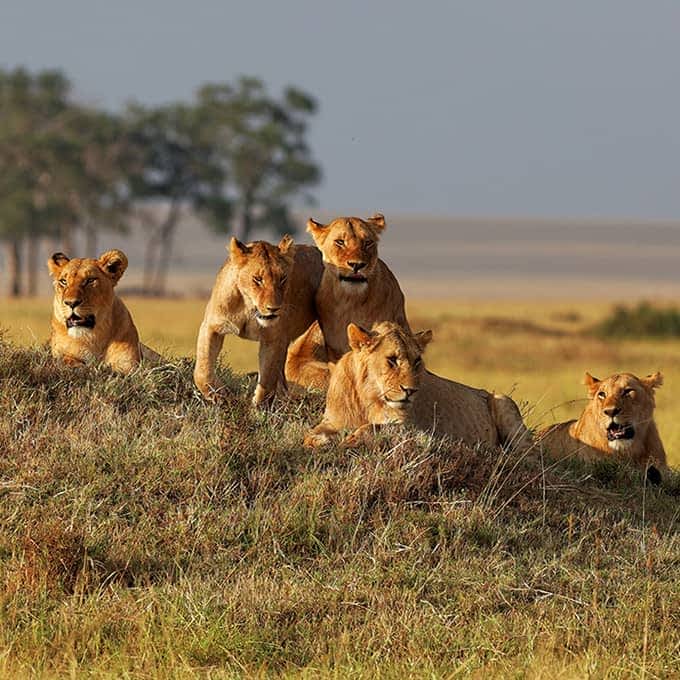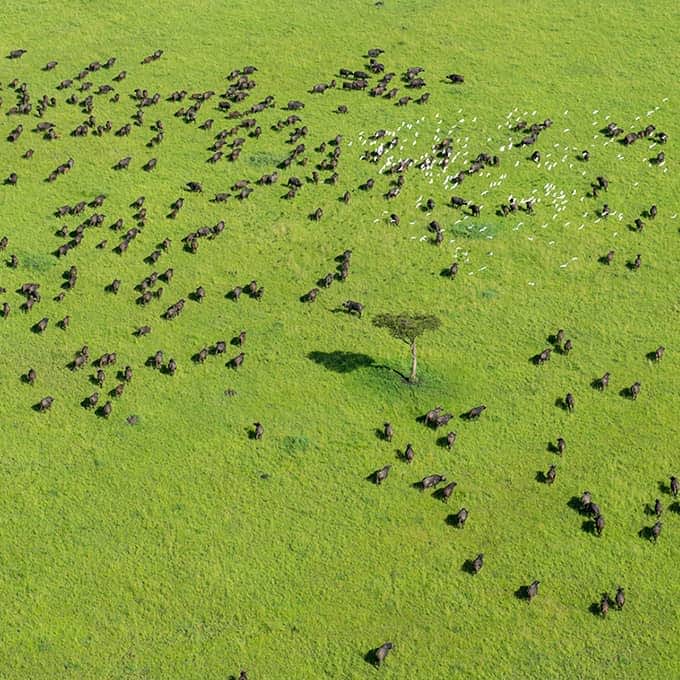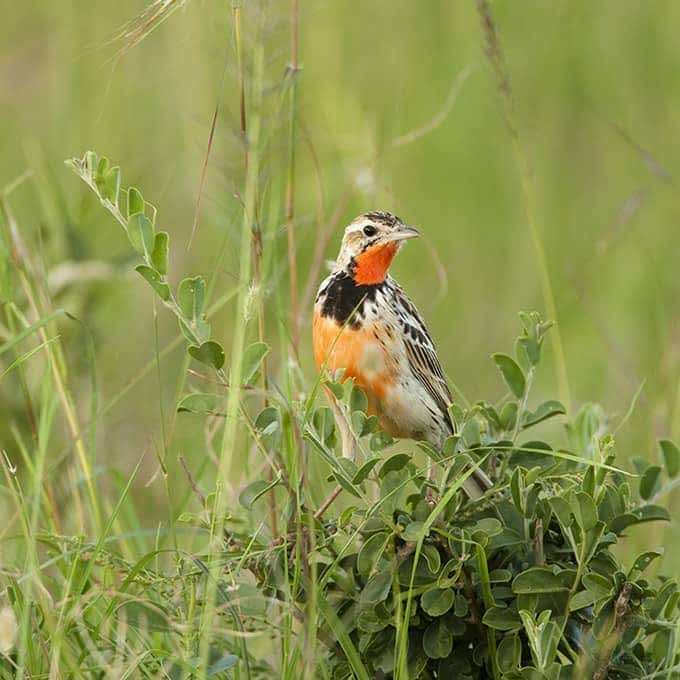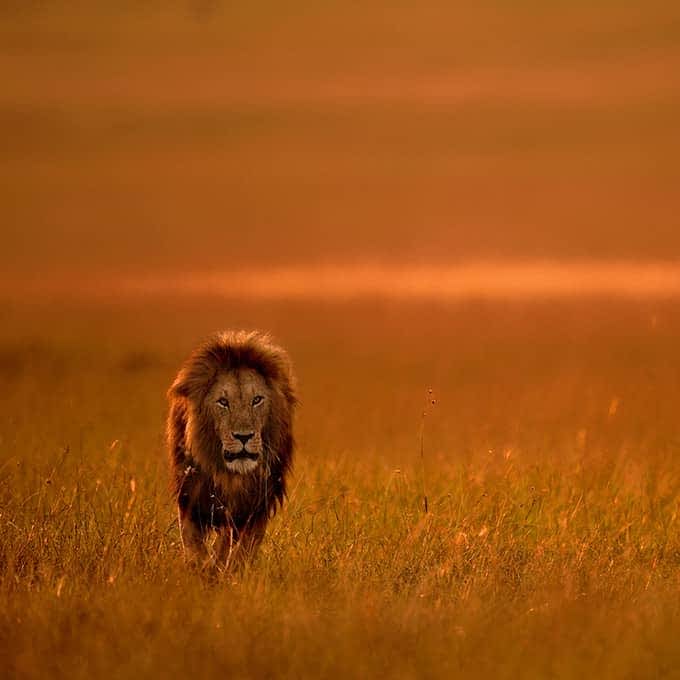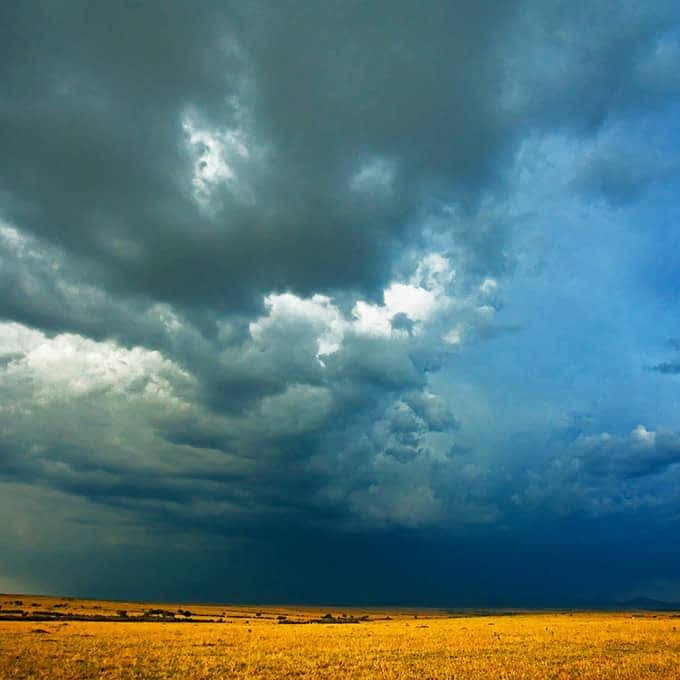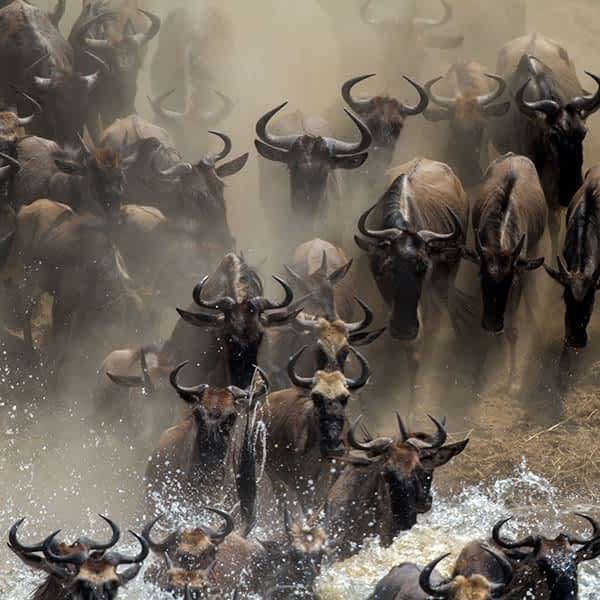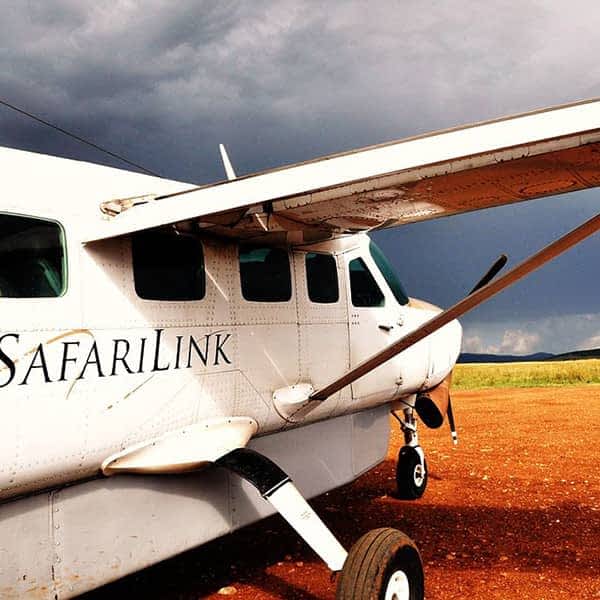The Great Migration in the Masai Mara
Undoubtedly, the Great Migration is one of the most popular attractions in the Masai Mara region. During the months July to October, the Mara is the scene of the epic annual trek of 1,5 million wildebeest from the Serengeti to the Masai Mara region. During this time of year the savannah is awash with wildebeest, zebras and other herbivores. It’s also the time of year known for the dramatic Mara and Talek River crossings. Since it’s drier this time of year, there’s less vegetation, making wildlife-viewing much easier.
Although you can travel to the Masai Mara year-round for excellent wildlife viewing, many travelers plan their trip around the Great Migration. The Masai Mara National Reserve, and the popular areas in it, can become rather crowded this time of year. You may even end up tail to tail in a safari vehicle queue at some point or another. If you get in enough traffic jams on your commute to work and want to avoid them on holiday, you can either travel to the Masai Mara during another time of year or perhaps opt to stay at one of the more exclusive and less crowded Masai Mara conservancies. Learn all about the Great Migration.
Lion season
After a bountiful rainy season and an abundance of food and water, the Masai Mara baby boom kicks in. When the plains are brimming with life and young wildebeest, zebra and other herbivore calves are seen dashing through the plains, along come the big cats. It’s the circle of life. The months January through March are known as the ‘Lion season’. With the disappearance of the rains, the grasses become less plentiful and wildlife becomes easier to spot. This is the perfect time of year to spot individual lions, or even a pride of lions, out and about.
Green season
The months March through May mark the arrival of the 'heavy rains' in the Masai Mara. The spring rains resemble a paint brush, bringing the dry African savannah to life and painting the landscape in new shades of green, gold and other vibrant hues. The dusty savannah makes way for swaying grasses and the vast plains are a maternity ward for young impalas, antelopes and other herbivores. The new arrivals attract predators in all shapes and sizes, so don’t be surprised if you see a few high-speed chases on the plains this time of year. The green season is also the best time of year for bird watching. Colourful swarms of migrant birds take to the savannah in thousands, flocking to the newly awakened blooming trees brought to life by the rains. This rainy season is also accompanied by lower accommodation rates at safari lodges and tented camps. Since most choose to visit the Masai Mara during the Great Migration, Masai Mara lodges and camps lower their prices significantly during this time of year. Learn all about Masai Mara weather & climate.
Masai Mara annual overview
January - February
These three months are pretty hot and dry. Since water is more scarce this time of year, just head for a waterhole for excellent wildlife viewing. Don’t forget to look towards the skies as well, it’s also bird migration season.
March - April - May
This time of year is known for the 'long rains' or as the wetter of Masai Mara’s two rainy seasons. It’s still hot during these months, but it’s especially rainy during the month april. On the up-side, the rains ring in a regeneration of local vegetation turning the Masai Mara all shades of green.
June - July - August - September - October
Pleasant temperatures, warm and dry weather, and mostly clear blue skies above. Perfect weather for wildlife safaris and therefore a popular time for safari travel to the Masai Mara.
November - December
The last two months of the year ring in the ‘short rains’ or less intrusive of the two rainy seasons. Expect overcast, cloudy skies and rain showers in the afternoons. Temperatures are still high, although the mornings can be rather chilly.
Dry season versus rainy season
If you’re having difficulty deciding when to visit Masai Mara, have a look at the pro’s and con’s of visiting during the dry season or rainy season:
Dry Season – June through October
Pros
- Less rain means less vegetation, making it easier to spot wildlife.
- Wildlife is more concentrated during the dry season, generally they’ll gather near waterholes and rivers.
- Lovely weather, less rain.
- Less mosquitoes means less chance of malaria.
- The best time of year to enjoy the Great Migration.
Cons
- Most visitors want to see the great Migration, so this time of year is busier and especially the Masai Mara National Reserve proper can see congestion in popular safari areas.
- Travel is more expensive this time of year, prices in the rainy season are much more favourable.
- Cold evenings and very chilly early morning game drives.
Rainy season – November through May
Pros
- Lower rates in comparison to the 'Great Migration months'.
- More chance of getting into the accommodation of your choice.
- The best time of year for birdwatching.
- Less crowded.
- The rains bring the plains and other areas to life, the landscape is green, blooming trees start to bloom and this time of year is excellent for photography.
- The rains clear the air of dust and cool everything and everyone off.
Cons (especially during the long rainy season in April and May)
- With the rains come poor road conditions.
- Wet weather can dampen the spirits and have you huddling in your tent on occasion.
- Some lodges and camps use April and May to close up shop for general maintenance and some time-off for staff.
- Rivers can flood their banks in April and May.
Further reading

